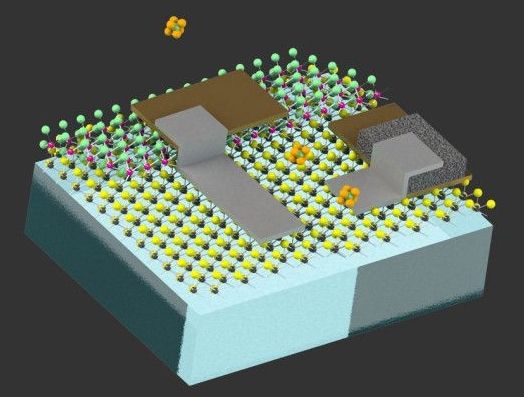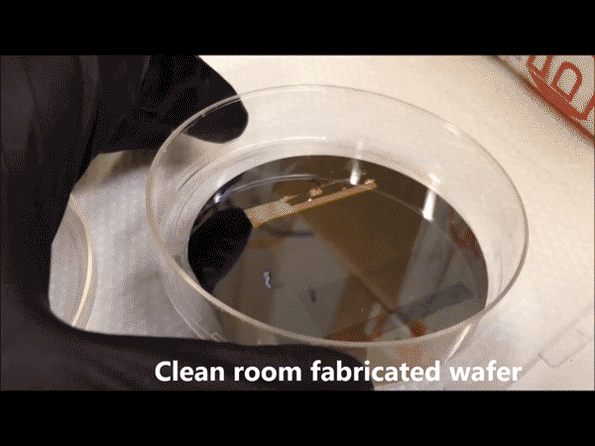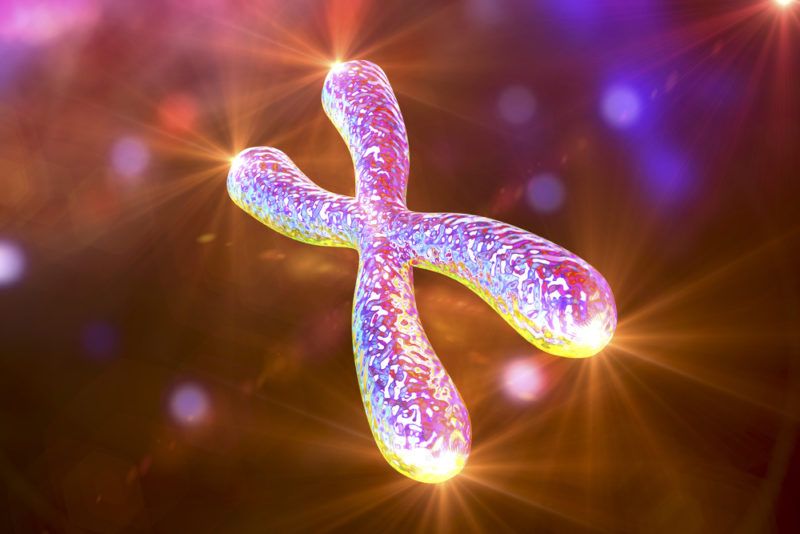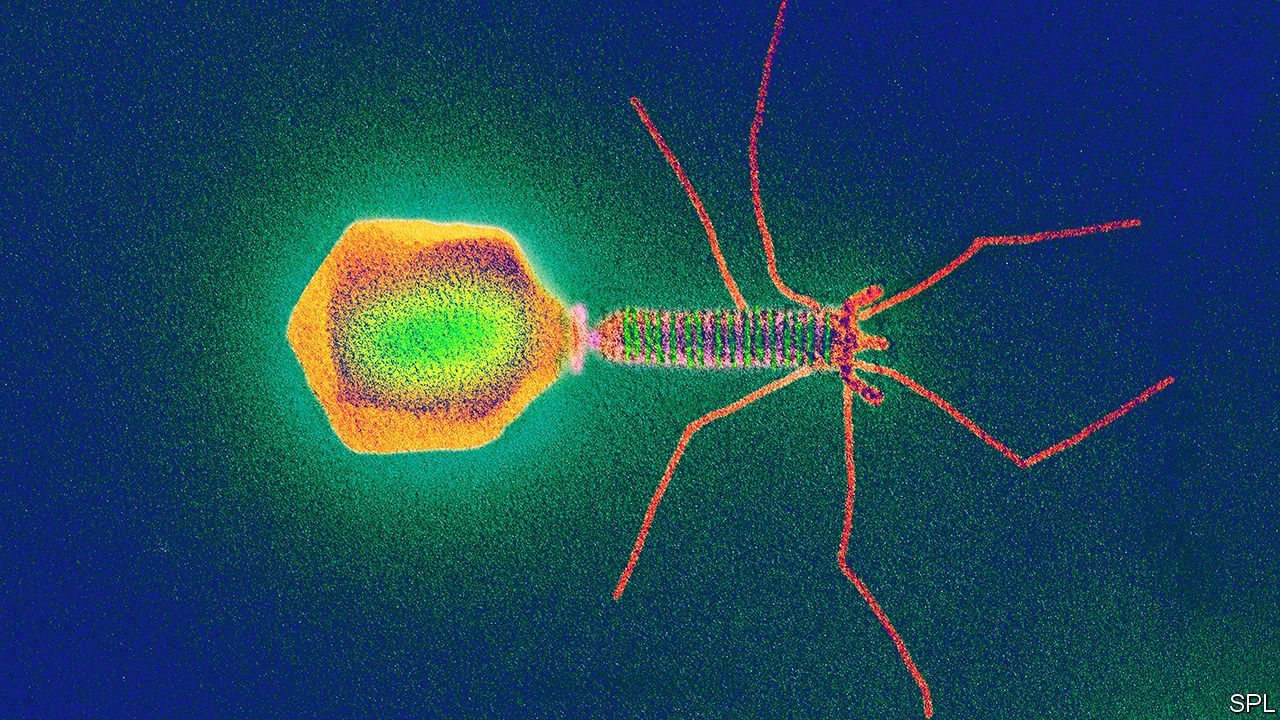A Liberian woman recovered after tending to her dying brother, but infected her family a year later. Being pregnant may have reignited the virus in her.



The Casimir force and superconductivity are two well-known quantum effects. These phenomena have been thoroughly studied separately, but what happens when these effects are combined in a single experiment? Now, Delft University of Technology have created a microchip on which two wires were placed in close proximity in order to measure the Casimir forces that act upon them when they become superconducting.
Is vacuum really empty? Quantum mechanics tells us that it’s actually swarming with particles. In the 1940s, Dutch physicists Hendrik Casimir and Dirk Polder predicted that when two objects are placed in very close proximity, about a thousandth of the diameter of a human hair, this sea of ‘vacuum particles’ pushes them together – a phenomenon known as the Casimir effect. This attractive force is present between all objects and even sets fundamental limits to how closely we can place components together on microchips.
Superconductivity is another well-known quantum phenomenon, also discovered by a Dutchman, Heike Kamerlingh Onnes, in the early 20th century. It describes how certain materials, such as aluminum or lead, allow electricity to flow through them without any resistance at cryogenic temperatures. Over the last 100 years, superconductors have revolutionized our understanding of physics and are responsible for magnetically levitated trains, MRI scans and even mobile phone stations.

Aging may be regulated by a discrete set of intracellular proteins including the mechanistic target of rapamycin (mTOR) kinase. mTOR functions within two multiprotein complexes called TORC1 and TORC2. Inhibition of TORC1 has extended life span in every species studied to date and ameliorated multiple aging-related pathologies including declining immune function. Mannick et al. now show that low-dose TORC1 inhibitor therapy in elderly humans decreased the incidence of all infections, improved influenza vaccination responses, and up-regulated antiviral immunity. Thus, targeting the TORC1 pathway that regulates aging may have clinical benefits for elderly humans including improvement in immune function and decreased infection rates.
Inhibition of the mechanistic target of rapamycin (mTOR) protein kinase extends life span and ameliorates aging-related pathologies including declining immune function in model organisms. The objective of this phase 2a randomized, placebo-controlled clinical trial was to determine whether low-dose mTOR inhibitor therapy enhanced immune function and decreased infection rates in 264 elderly subjects given the study drugs for 6 weeks. A low-dose combination of a catalytic (BEZ235) plus an allosteric (RAD001) mTOR inhibitor that selectively inhibits target of rapamycin complex 1 (TORC1) downstream of mTOR was safe and was associated with a significant (P = 0.001) decrease in the rate of infections reported by elderly subjects for a year after study drug initiation. In addition, we observed an up-regulation of antiviral gene expression and an improvement in the response to influenza vaccination in this treatment group.

The latest robots out of MIT are small enough to float “indefinitely” in the air. Researchers accomplished the feat by attaching 2D electronics to colloids — tiny particles measuring around one-billionth to one-millionth of a meter. All told, the devices are roughly the size of a human egg cell.
What’s more, the addition of photodiode semiconductors means the tiny individual systems are able to be self-powered, without the need for a battery. The system converts light into a small electrical charge that’s enough to keep the device’s on-board environmental sensors running, while storing on-board information.


In a study on murine mtDNA, scientists reversed skin wrinkles and hair loss.
In what appears to be a world first, scientists at the University of Alabama at Birmingham have reversed two of the most common visual signs of aging—skin wrinkles and hair loss—in mice by turning off a gene responsible for mitochondrial dysfunction [1].
Study abstract

Australian researchers have made a discovery about telomeres that may have implications for aging, heart disease, cancer, and other age-related diseases.
So, what are telomeres?
Each of the chromosomes that store our genetic information has a telomere at each end. This protective cap consists of a specific DNA sequence that is repeated thousands of times and has two purposes: firstly, it protects the coding regions of the chromosomes and prevents them from being damaged, and secondly, it acts as a clock that controls the number of replications a cell can undergo; this is thought to act as a quality control system to ensure that aged and potentially damaged cells do not remain in circulation.

I’m excited to share I’ll be speaking/debating at the upcoming #Biohack the Planet 2018 conference in Oakland on Aug 31 & Sept 1. Many interesting biohackers will be there. Tickets are still available and very reasonably priced right now, but they will likely sell out. Hope to see you there! Here’s the speaker list: http://biohacktheplanet.com/2018-speakers/ #transhumanism #biohacker & ticket page: https://www.eventbrite.com/e/biohack-the-planet-2018-ticket…
Bryan Johnson is the founder and CEO of Kernel, OS Fund and Braintree.
In 2016, Bryan invested $100M in Kernel to build advanced neural interfaces to treat disease and dysfunction, illuminate the mechanisms of intelligence, and extend cognition. Kernel is on a mission to dramatically increase our quality of life as healthy lifespans extend. He believes that the future of humanity will be defined by the combination of human and artificial intelligence (HI +AI). In 2014, Bryan invested $100M to start OS Fund which invests in entrepreneurs commercializing breakthrough discoveries in genomics, synthetic biology, artificial intelligence, precision automation, and new materials development. Bryan founded Braintree in 2007, later acquiring Venmo, which he sold to Ebay in 2013 for $800M. He is an outdoor-adventure enthusiast, pilot, and author of a children’s book, Code 7.

Michael Specter is a staff writer at The New Yorker.
Since joining the magazine in 1998, he has written about agricultural biotechnology, the global AIDS epidemic, avian influenza, malaria, the world’s diminishing freshwater resources, synthetic biology, geoengineering, new ways to edit DNA with CRISPR, and the implications of gene drive technology. His profile subjects include: Ingrid Newkirk, the founder of PETA, Dr. Oz, Peter Singer, Vandana Shiva, Miuccia Prada, and Richard Branson. Specter came to The New Yorker from the New York Times, where he had been a roving foreign correspondent based in Rome. From 1995 to 1998, Specter served as co-chief of The Times Moscow bureau. Before working at the Times he was the New York Bureau Chief of The Washington Post.

BIRMINGHAM, Ala. — Wrinkled skin and hair loss are hallmarks of aging. What if they could be reversed?
Keshav Singh, Ph.D., and colleagues have done just that, in a mouse model developed at the University of Alabama at Birmingham. When a mutation leading to mitochondrial dysfunction is induced, the mouse develops wrinkled skin and extensive, visible hair loss in a matter of weeks. When the mitochondrial function is restored by turning off the gene responsible for mitochondrial dysfunction, the mouse returns to smooth skin and thick fur, indistinguishable from a healthy mouse of the same age.
“To our knowledge, this observation is unprecedented,” said Singh, a professor of genetics in the UAB School of Medicine.

Some viruses sacrifice themselves so that others may multiply.
THAT predators often hunt in packs is a commonplace. Wolves do it. Killer whales do it. Even Velociraptor, a species of dinosaur made famous by “Jurassic Park”, is believed to have done it. These are, or were, all intelligent species, capable of exchanging and interpreting information. But the logic of pack hunting, that many may achieve what one alone cannot, and that individual pack members may perform different roles, does not depend on intelligence. Indeed, evidence has now emerged that this logic applies to viruses, the simplest biological entities of all. It was published this week in Cell, by Edze Westra and Stineke van Houte at the University of Exeter, in England.
The viruses in question are bacteriophages, which “hunt” bacteria. They do not eat their prey. Rather, they take over its genetic apparatus to create replicas of themselves, killing the host as a consequence. To do so they have to penetrate a bacterium’s cell wall and then subvert its internal defences, of which there are several. One of the best known, because it is the basis of an emerging gene-editing technology (see article), is called CRISPR. The CRISPR system detects and cuts up alien DNA. In the wild, such DNA will almost always have come from a virus. To counter this, some bacteriophages have evolved ways of gumming up CRISPR’s cellular machinery. Dr Westra and Dr van Houte have shown that, in essence, such phages collaborate. Some do the gumming. Others hijack the genetic apparatus.
Get our daily newsletter
Upgrade your inbox and get our Daily Dispatch and Editor’s Picks.

When CRISPR-Cas9 is used to edit genomes, off-target DNA damage is more common than previously thought.
A GREAT deal rides on the accuracy of the gene-editing tool known as CRISPR-Cas9. Since its discovery in 2012 it has become popular for tinkering with genomes of all kinds, thanks to its ability to make editing cheap and easy. Firms such as CRISPR Therapeutics, Intellia Therapeutics and Editas Medicine have been built on the idea that it could be used to develop treatments for human diseases. Editas, based in Cambridge, Massachusetts, announced this year that it would work on five new human medicines over the next five years.
In China the technology is already in clinical use. In Hangzhou Cancer Hospital, for example, CRISPR-Cas9 is being employed to engineer immune-system cells removed from patients with cancer of the oesophagus. The hope is that when the engineered cells are returned to a patient’s body, the editing will have improved their ability to attack tumours. More studies involving human beings are expected in other countries for the treatment of beta-thalassaemia, a blood disorder, and Leber’s congenital amaurosis, a form of blindness. Further ahead, there is hope that CRISPR-Cas9 will help treat diseases such as AIDS, cystic fibrosis, Huntington’s chorea and Duchenne muscular dystrophy.
Get our daily newsletter
Upgrade your inbox and get our Daily Dispatch and Editor’s Picks.